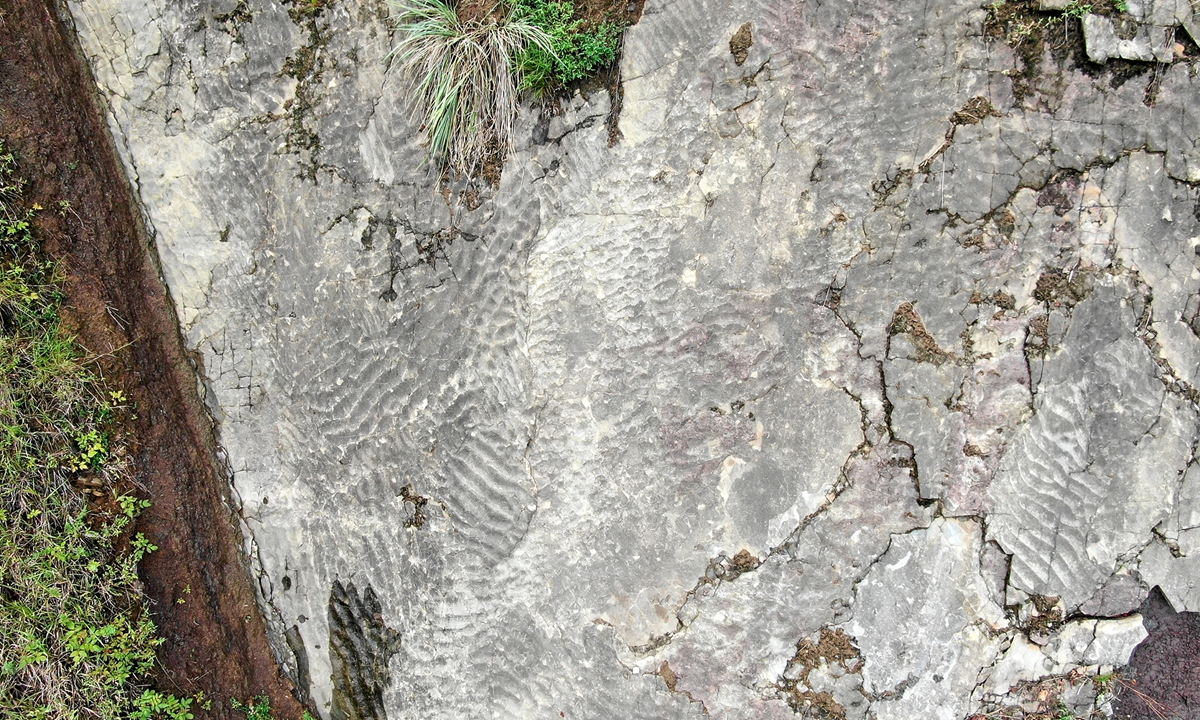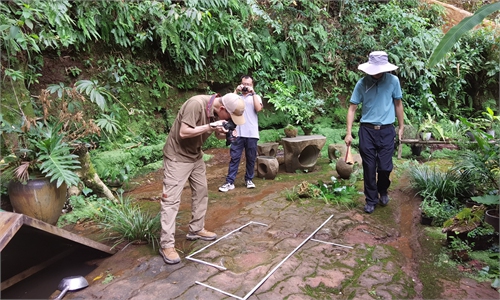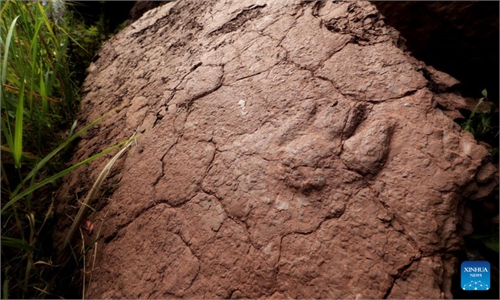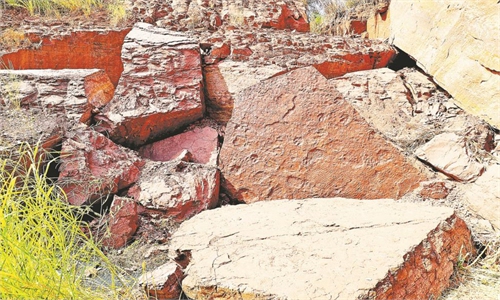Dinosaur footprint fossils found for the 1st time in Zigui Basin in C.China’s Hubei Province

Jurassic dinosaur footprint fossils found for the first time in Zigui Basin in Central China's Hubei Province Photo: Courtesy of Xing Lida
Footprint fossils of dinosaurs from the Jurassic period were discovered in Zigui Basin in Central China's Hubei Province for the first time, which has enriched the species of dinosaur fossils in Hubei and means significantly to the composition of dinosaur fauna in the region, a research team of both Chinese and foreign scientists announced on Friday.
At least 11 footprints, including nine footprints of sauropod dinosaurs that formed a trail, were found. Besides, there is also one isolated sauropod footprint and one isolated theropod footprint.
The research, which was jointly conducted by scientists from China, the US and Germany, has been published in the Historical Biology, an international peer-reviewed scientific journal of paleobiology.
The discovery means significantly to the understanding of the activity range and paleogeographic distribution of dinosaurs in the middle Jurassic period in China, scientists said in their research report.
The footprints were discovered by researchers Wang Yongdong, Zhang Haichun and assistant researcher Li Liqin from Nanjing Institute of Geology and Palaeontology, Chinese Academy of Sciences on a rock wall with a dip of more than 60 degrees in Xiakou township in Xingshan county, Hubei Province in July 2022 and have been jointly investigated and researched by a research team led by Xing Lida, a paleontologist with the China University of Geosciences.
The expedition team investigated, measured and obtained a large amount of data through climbing and the use of drones since the footprints were kept high up in a rock wall.
The footprints were kept in the silty mudstone from the middle Jurassic, which means the area used to be an environment of lacustrine deposits. Whereas, the plant and sporopollen fossils produced in the same layer turned out to be the vegetation types prefer drought and heat environment, indicating that the region was once hot and dry.
Among the sauropod footprints, five were from the front feet and five from the rear feet. Meanwhile, all the footprints have been severely weathered and poorly preserved.
According to the features of aspect ratio and the width of the trail, researchers classified this trail into that of the Brontopodus-type.
Researchers decided that the footprints were from a sauropod about four meters long with its walking speed between 3.89 kilometers and 6.08 kilometers per hour. This size may represent a juvenile individual of large-scale sauropods or small sauropod dinosaurs.
Meanwhile, the isolated and incomplete footprint was classified by the researchers into that of the three-toed carnivorous theropod dinosaur. Since its preservation conditions are poor, it is difficult to determine the exact classification. The overall shape of the footprint is very close to that of the Eubrontes type.
There are not many records of dinosaur fossils in Hubei. Those that have been found are dinosaur egg fossils and a few dinosaur bone fossils in the Cretaceous strata in Yunyang district in the city of Shiyan.
There have been no related fossils of dinosaurs from the Jurassic period ever found in Hubei before, researchers said. This discovery proves that dinosaurs were active in the Zigui Basin in Hubei during the Jurassic period.
The origin of footprint fossil in Xiakou belongs to Zigui Basin in geological structure. The basin is also part of the eastern extension of the Qianlu Basin in Southwest China's Sichuan Province. Thus, researchers inferred that the dinosaur fauna in the Zigui Basin may also be related to the dinosaur fauna in the regions of Southwest China's Sichuan and Yunnan provinces and Xizang Autonomous Region.
Global Times



